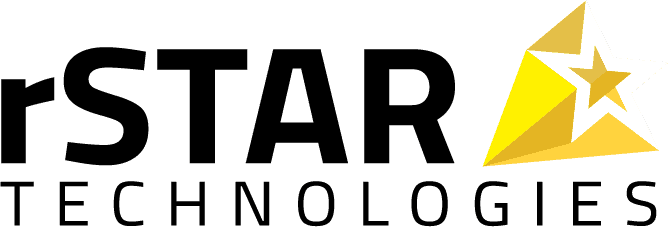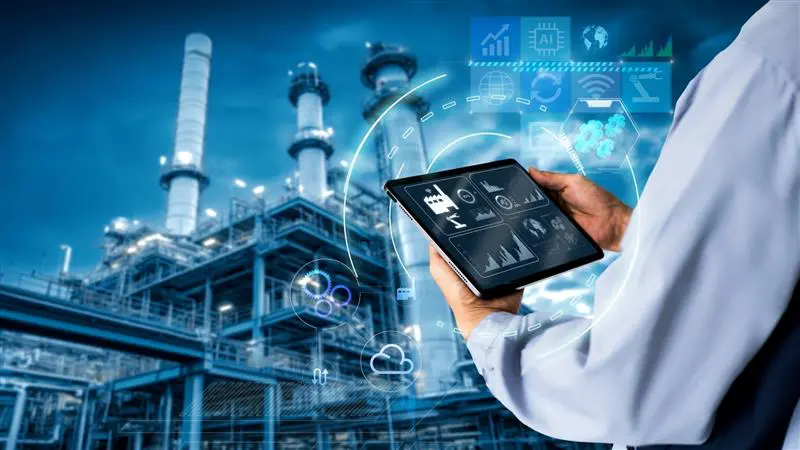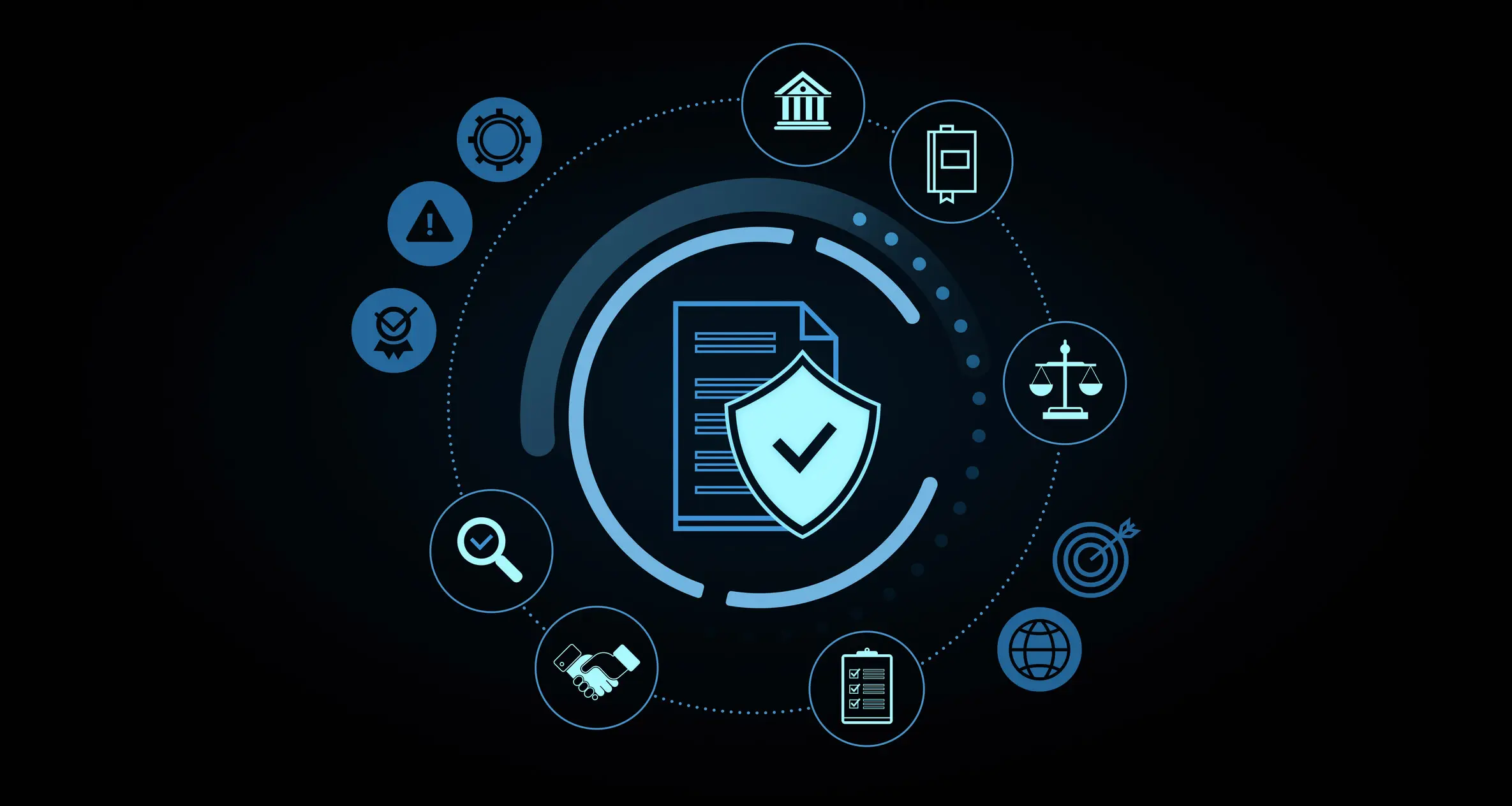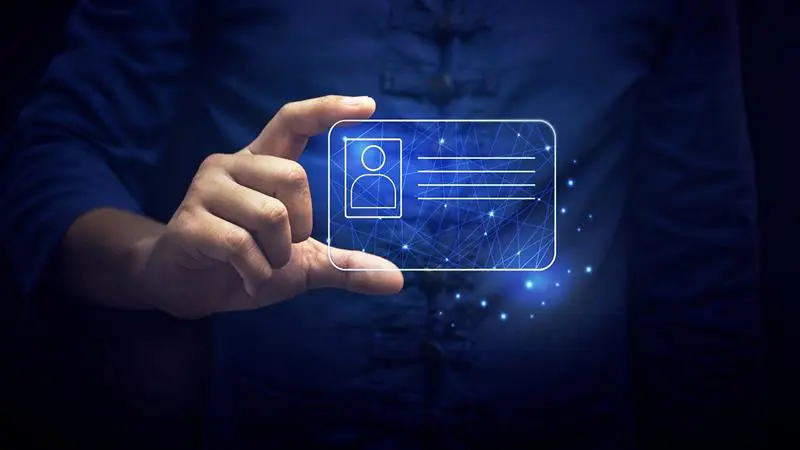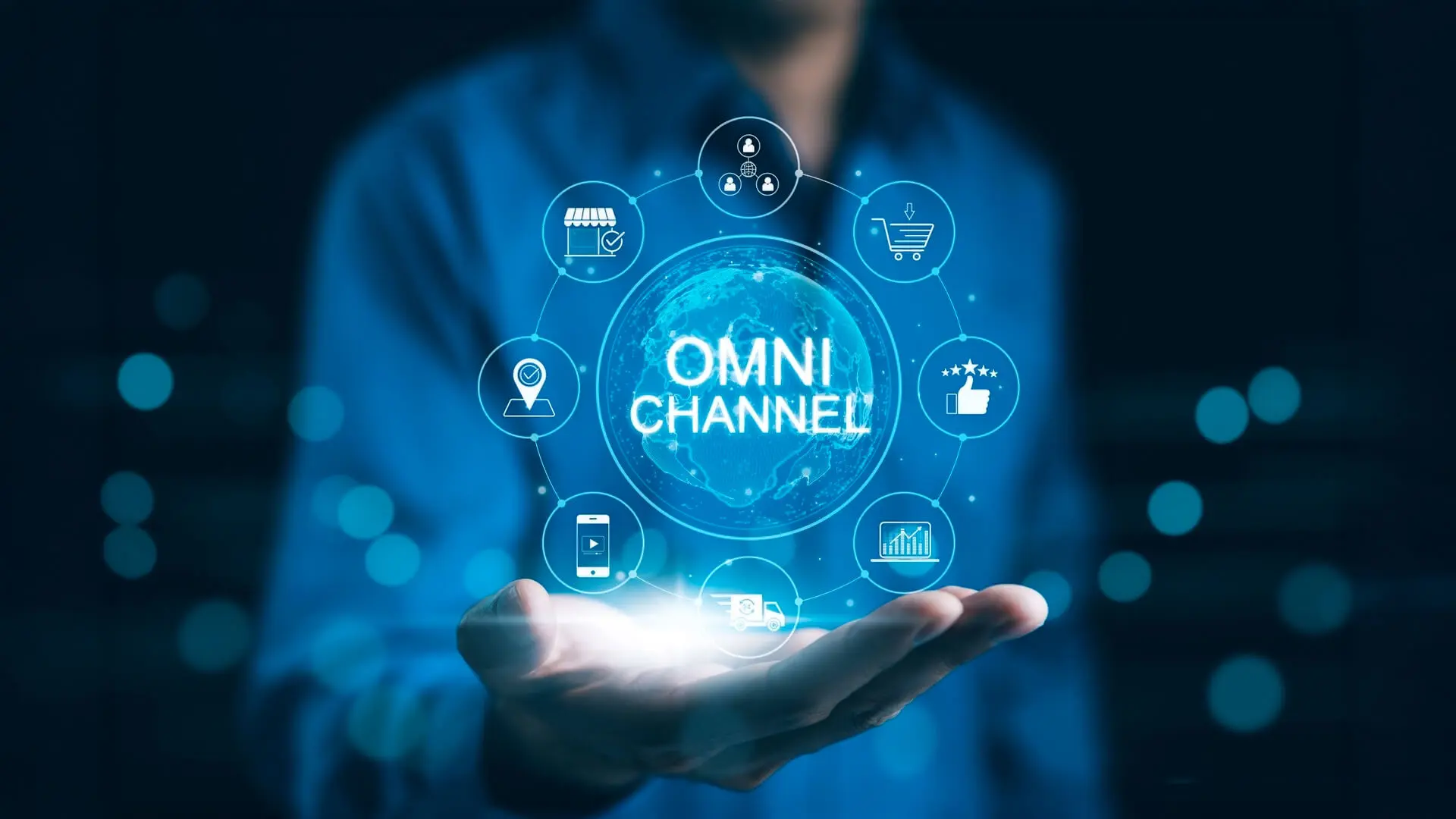GenAI is revolutionizing cybersecurity in the energy and utilities sector. It’s an important tool that can be used to thwart many malicious attacks.
Imagine a hacker group infiltrating a power grid and shutting down electricity for millions. This isn’t science fiction—it happened during the 2021 Colonial Pipeline ransomware attack, which disrupted fuel supplies across the U.S. East Coast. Energy and utility companies are prime targets for cybercriminals, facing threats like ransomware, phishing scams, and attacks on industrial control systems (ICS).
Enter Generative AI (GenAI)—a technology that’s rewriting the cybersecurity playbook. Unlike traditional tools, GenAI acts like a digital detective, predicting threats, learning from patterns, and crafting real-time countermeasures. Let’s explore how this innovation is keeping the lights on (literally).
The Problem: Why Old Tools Aren’t Enough
Traditional cybersecurity tools are struggling to keep pace with the increasing sophistication and frequency of cyberattacks targeting the energy and utilities sector. In 2022 alone, almost half of energy companies fell victim to ransomware attacks, endangering critical infrastructure such as power grids and gas pipelines. This highlights the dire consequences of such breaches, which can disrupt hospitals, factories, and entire cities. Advanced Persistent Threats (APTs), like the infamous Stuxnet virus, operate with stealth and precision, bypassing outdated defences. Meanwhile, overwhelmed security teams face millions of alerts daily, with breaches often going undetected for an average of 277 days. To address these challenges, the industry needs innovative, adaptive solutions that surpass the limitations of old tools to safeguard critical operations effectively.
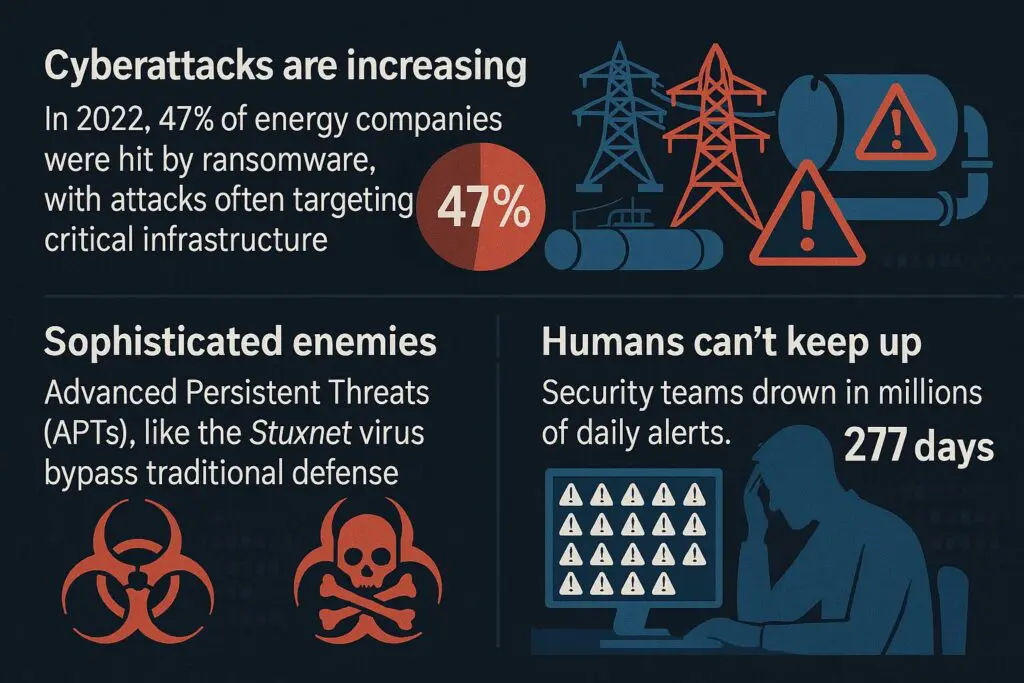
Cyberattacks are increasing. In 2022, 47% of energy companies were hit by ransomware, with attacks often targeting critical infrastructure like power grids and gas pipelines.
Sophisticated enemies. Advanced Persistent Threats (APTs), like the Stuxnet virus that sabotaged Iranian nuclear facilities, bypass traditional defences.
Humans can’t keep up
Security teams drown in millions of daily alerts. 277 days is the average time to detect a breach.
Generative AI for Cybersecurity in the Energy and Utility Sector
Generative AI (GenAI) is revolutionizing cybersecurity in the energy and utilities sector by addressing the increasingly complex challenges posed by modern cyberattacks. With its ability to analyze vast amounts of data in real time, GenAI can predict the unpredictable by identifying emerging threats and unusual patterns before they escalate into full-scale attacks. It automates defenses, enabling security systems to respond swiftly and effectively to potential breaches, reducing reliance on overburdened human teams.
Moreover, GenAI excels at spotting subtle anomalies that often slip past traditional tools and human oversight, such as stealthy malware or irregular network activity. By leveraging these capabilities, GenAI ensures the resilience of critical infrastructure, safeguarding power grids, gas pipelines, and essential operations from cyber threats.
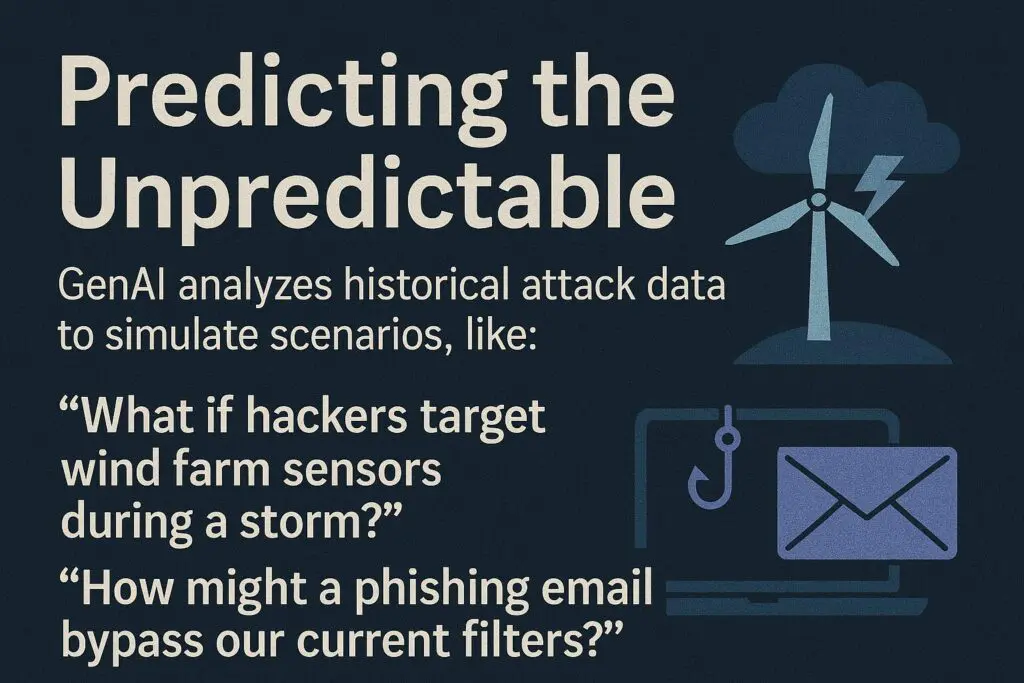
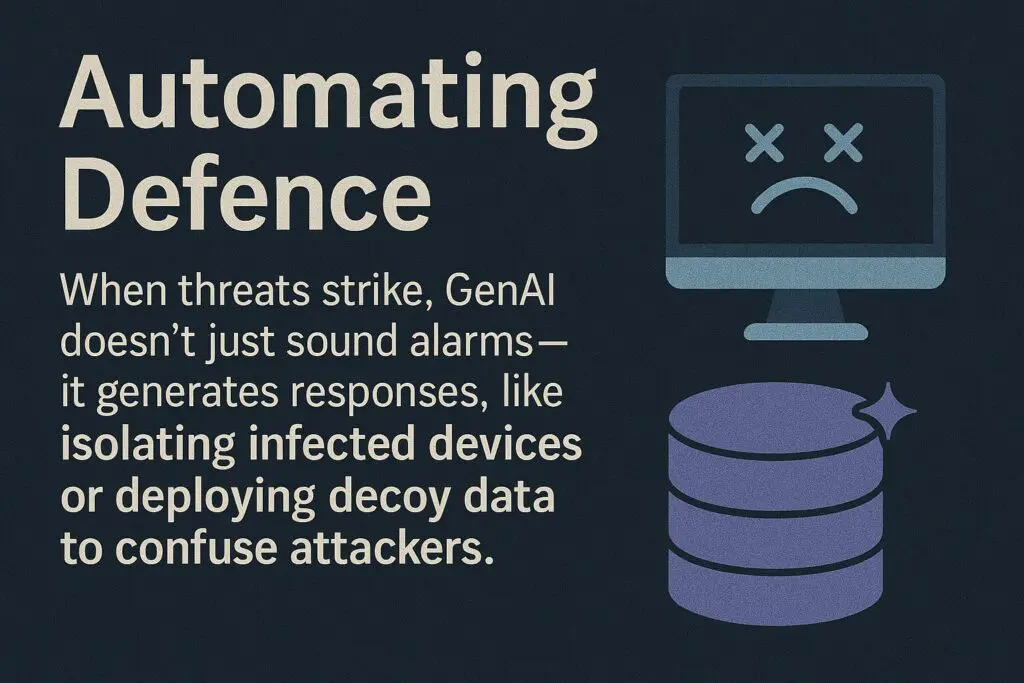
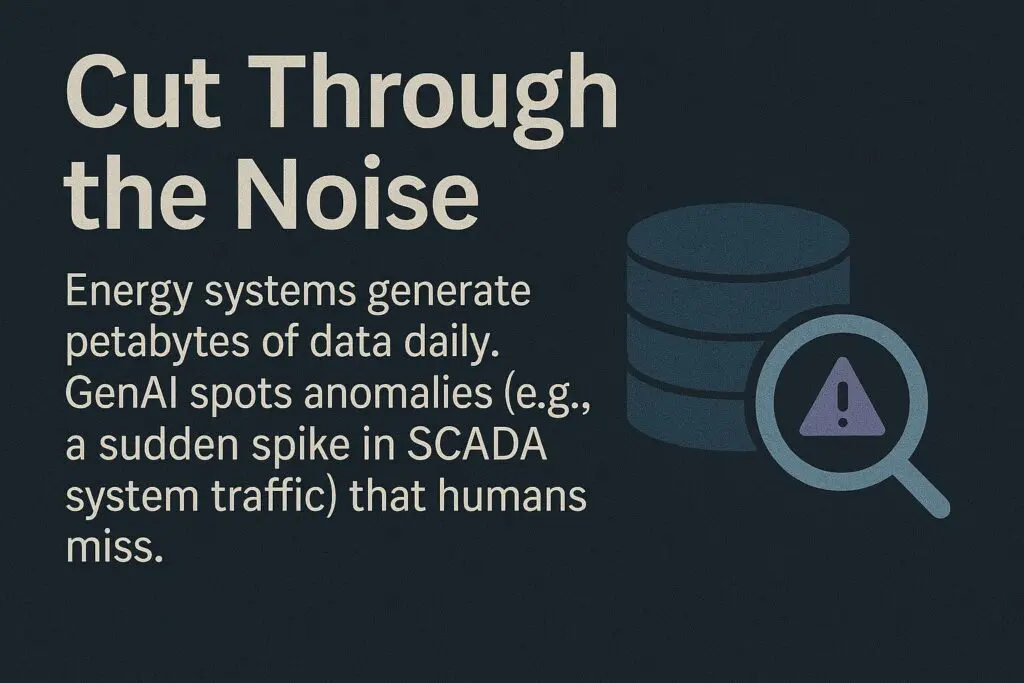
Case Study: Saving “GreenGrid Utilities”
The Challenge
A mid-sized energy provider, GreenGrid, faced APTs targeting its smart meters. Legacy systems flooded teams with false alarms.
The Solution
GreenGrid integrated GenAI with:
- SIEM systems (like Splunk): AI prioritized critical alerts, slashing noise by 60%.
- NIST guidelines: GenAI aligned with NIST’s ICS security framework (SP 800-82).
The Win
GenAI detected a zero-day ransomware strain in a substation, quarantined the network, and patched vulnerabilities—all in 2 seconds.
Learn More About the Case Study
For more information about this story, please see Splunk SIEM Case Studies: Splunk Energy Solutions and NIST Cybersecurity Framework: NIST CSF
Results: Why Energy Companies Choose GenAI for Cybersecurity
The impact of advanced AI-driven cybersecurity solutions in the energy and utilities sector is remarkable. Detection time has plummeted from 48 hours to just 15 minutes, ensuring rapid response to threats. Accuracy has significantly improved, with false positives decreasing by 45%, enabling teams to focus on real risks. Additionally, resilience has surged, as AI-generated email filters now block 95% of phishing attempts. As one CTO aptly described it, these technologies act as “a 24/7 cyber-army that never sleeps,” fortifying critical infrastructure against evolving cyber threats.
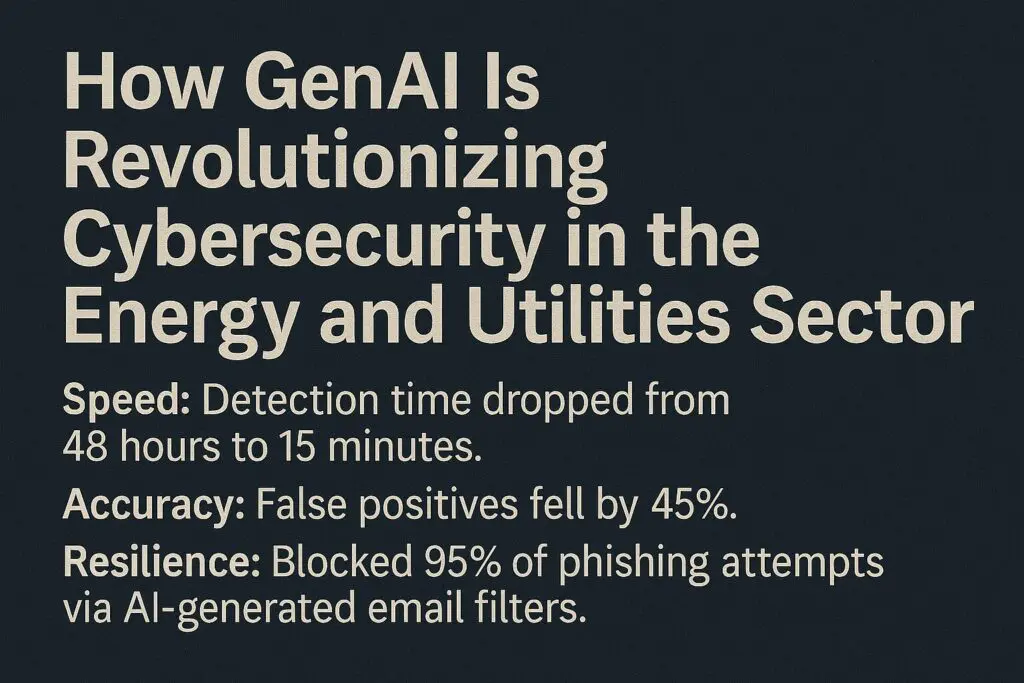
Challenges: GenAI Is Powerful, But No Silver Bullet
While Generative AI (GenAI) offers remarkable potential for strengthening cybersecurity, it is no panacea. One significant challenge is the risk of bias. If GenAI models are trained on incomplete or unrepresentative data, they might fail to identify niche threats, leaving vulnerabilities unaddressed. To mitigate this, regular audits and the use of diverse datasets are essential to ensure robust and comprehensive threat detection.
Regulation is another critical consideration. Compliance with frameworks like GDPR in the EU or NERC CIP in North America requires transparency in AI-driven decisions. Organizations must avoid “black box” solutions and instead prioritize explainable AI, ensuring that every decision made by the system is understandable and justifiable to regulators and stakeholders alike.
Finally, the ever-evolving landscape of cyber threats demands constant vigilance. GenAI models must be updated weekly with fresh intelligence, such as data from MITRE’s ATT&CK framework, to stay ahead of increasingly sophisticated hackers. Without these regular updates, even the most advanced AI systems risk falling behind in the arms race against cyber adversaries.
The Future: Where Do We Go From Here?
The future of Generative AI (GenAI) in cybersecurity holds immense promise for energy and utility companies as they embrace evolving technologies. One critical area where GenAI will make a significant impact is securing decentralized systems such as solar microgrids and smart meters. These interconnected smart grids and Internet of Things (IoT) devices, while revolutionizing energy management, also present new vulnerabilities. GenAI’s ability to analyze vast, dynamic networks in real time ensures that these systems remain protected against potential threats, enabling a resilient and sustainable energy future.
Another frontier in cybersecurity is the rise of quantum computing, which could empower adversaries with quantum-powered threats capable of breaking traditional encryption methods. To stay ahead in this high-stakes cybersecurity arms race, future AI models will need to incorporate advanced strategies to detect and neutralize such threats. By leveraging the power of quantum-aware AI, the energy and utility sector can safeguard critical infrastructure and maintain trust in its systems amidst ever-changing challenges.
Your Next Steps: Assessment or Pilot with rSTAR and More
- Pilot GenAI on a single system (e.g., billing or substations). rSTAR Technologies can help you with GenAI and cybersecurity assessments and pilot program selection, implementation, and roadmaps to help you choose an effective starting point in your GenAI and cybersecurity journey.
- Train teams to collaborate with AI tools. Training teams to collaborate with AI tools is crucial for maximizing cybersecurity effectiveness. This involves equipping teams with technical skills and fostering a mindset where AI is seen as a partner, not a replacement. Hands-on training and regular updates ensure professionals can confidently use AI tools to counter evolving cyber threats.
- Share anonymized threat data with industry peers. This means securely sharing information about cyber threats—such as attack methods, vulnerabilities, or malicious entities—with others in your industry while ensuring that no sensitive or identifiable data is included. By anonymizing the shared data, companies can collaborate to strengthen collective defences against cyberattacks without compromising their privacy or exposing proprietary details. It’s a proactive way to learn from each other’s experiences and enhance industry-wide resilience.
Real-World Inspiration
- Microsoft Azure Sentinel: Helps Duke Energy automate threat hunting. Microsoft Energy Solutions
